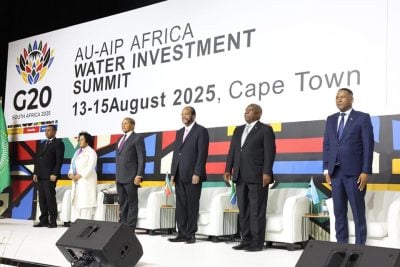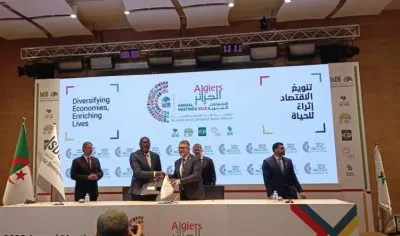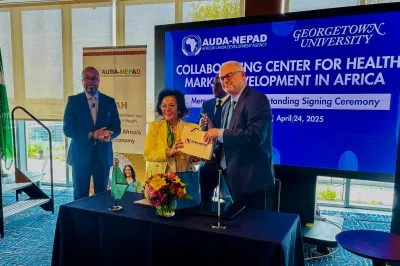History tells us that no region in the world has been able to achieve economic and social progress without the knowledge and application of science and technology. All modern advances are built on a solid foundation of scientific knowledge. Yet Africa, which is in dire need of scientific knowledge, is currently at the bottom of the heap in this regard.
In a report published in 2004 that ranked the world’s universities, there was not a single African institution in the top 200! In the overall rankings, all regions of the world were represented – except the sub-Saharan Africa region. It has abysmal statistics: 83 engineers and scientists per million population against 423 in North Africa, 783 in Asia (excluding Japan), 514 in all developing countries and 1,102 across industrial countries.
Over the years, engineering and sciences have been the engines for industrial development, employment creation and improvement of living conditions around the world.
A study carried out in 1994 showed that MIT engineers have created more than 4,000 companies with total sales of $232bn, more than the combined GDP (in 2002 current prices) of all countries in sub-Saharan Africa (SSA) excluding South Africa.
Similarly, most of the economic development achieved by India over the past decades is largely attributed to the Indian Institute of Technology (IIT).
Yet sub-Saharan Africa, the poorest region in the world, has no reputable institution of excellence in science. The good news, however, is that all this is about to change with the launch of a new initiative. It is called The Nelson Mandela Institution for Knowledge Building and the Advancement of Science and Technology in Sub-Saharan Africa. It is an African initiative named after President Mandela for his visionary leadership, commitment to excellence in education and to the development of Africa. The initiative envisions the transformation of sub-Saharan Africa’s industrial and economic landscape and the strengthening of its socio-cultural foundation.

It is rooted in a strong public-private and industry-academy partnership for long-term sustainability. It is a groundbreaking initiative to foster economic growth and diversification, value addition and employment creation, through the promotion of excellence in science, engineering and their applications – a development strategy successfully used in other regions of the world over the years.
Main pillars of initiative
Indeed, the success of this initiative is essential for the transformation of sub-Saharan Africa’s agrarian-based economies.
The key pillars of the Institution include the African Institute of Science and Technology and the Sub-Saharan African Learning Network (SSALN). The African Institute of Science and Technology (AIST) is a world-class institution based on very successful models of leading institutions of excellence in science and engineering around the world. It will offer instruction at undergraduate, graduate and post-graduate levels, and provide best facilities for research.
Drawing on the decentralised IIT model, the Institution will establish four regional AISTs (central, eastern, southern and western Africa), with the first expected to be operational by 2007.
Subsequently, the establishment of other AISTs will be phased in and implemented gradually for endogenous growth. At full capacity, the AIST will produce a critical mass of 5,000 outstanding scientists and engineers every year. These engineers’ mission will be to create and adapt knowledge to transform local communities, improve human conditions and accelerate the development of SSA.
This mission will be supported by a strong partnership between research and industry, enhanced by technology parks established around AIST for seeding innovations. More than an African version of IIT or MIT, the AIST will be the catalyst for Africa’s transformation and integration into the global economy.
The SSALN is a platform to enhance knowledge creation and dissemination across Africa. The flow of knowledge will be facilitated by an “information-driven beltway” linking Africa’s institutions of higher learning.
This link will facilitate the collaboration between the AISTs and national academic institutions hence expanding learning opportunities while contributing to the improvement of national education systems. It will be strengthened by collaborative research and industry outreach.
Development potential of initiative
The potential impact of this initiative is expected to be significant. Sciences and engineering provide the foundation for sustainable development. Through the implementation of irrigation systems, they played a key role in the “green revolution” achieved by successful nations in other regions of the world. As a result, episodes of famine and hunger that continue to haunt Africa are souvenirs of the past in those regions.
Achieving the green revolution is a first step in the process of economic diversification and employment creation. In that regard, some aspects of the development potential of this initiative include:
- economic diversification and employment creation enhanced by strong links with industry for technology transfer and the creation of technology parks around the AIST regional institutes;
- mitigation of growth volatility and exposure to terms of trade and exogenous shocks;
- reduction of technological, scientific and knowledge gaps between SSA and the rest of the world;
- reduction of inequality in access to education as a result of the implementation of a ‘need-blind’ admission policy and transparency in the selection process;
- brain drain mitigation, partly as a result of the creation of excellent academic infrastructure and prospects for advanced research continuing the production of critical mass of scientists;
- overall improvement in the quality of science education, partly as a result of the establishment of benchmarks for cross-country comparisons and performance assessment;
- reduction of education expenses and promotion of research in a cost-effective manner, as a result of economies of scale offered by the continental approach, which allows pooling of resources and limits costs for any given country, while increasing the benefits for all;
- enhancement of the African Union vision and its economic development platform, the New Partnership for Africa’s Development (Nepad) and the “African Renaissance”.
The initiative is based on an independent and not-for-profit model to support the promotion of excellence through competitive processes, transparency and accountability.
In this regard, the Institution has established an Endowment Fund for Excellence and will rely on the generosity and contribution from public and private sources, corporate and individual benefactors worldwide.
The endowment model has been used successfully by leading academic institutions around the world, particularly in the US and will mitigate inherent risks and ensure a longterm sustainability of the initiative.
Over the coming years, the Institution will strive to build an endowment that will yield earnings sufficient to cover annual operating and maintenance expenses for the four AISTs.
A number of efforts are already underway to establish the “Consortium of Friends of AIST” across countries in Africa and around the world to bring together business leaders, scientists and policymakers to mobilise continued support towards the growth of the endowment.
The establishment of the endowment is a key to the success and implementation of this initiative. Implementation is supported by the African Academy of Sciences, IIT Bombay, the AIST Independent Scientific Advisory Board and the African Scientific Committee.
The African Scientific Committee is an important component of the Institution. It has a dual representation (two experts per field with one based in Africa and the other from the Diaspora) to enhance transfer of technology through collaborative research. Representatives of this committee are already at work, developing curricula for AIST academic departments as part of their contribution to ongoing implementation efforts.
The key steps in the coming months include grounding the initiative continent-wide to strengthen its ownership and mobilising the resources to trigger implementation and establish academic infrastructures for the first AIST.
This is a major African initiative whose success is essential for the transformation of sub-Saharan Africa’s agrarian-based economies and eradication of poverty.
The support provided by Africans from the continent and the Diaspora in the coming months will be critical for its take-off and success. This will help strengthen the ownership of the initiative and eventually trigger further support from multinational corporations and from friends of Africa around the world.
Development has always been about pride and commitment to a shared vision and ideal. The Nelson Mandela Institution is already considered a groundbreaking initiative and the pride of Africa. It now needs the support and commitment of all the Sons and Daughters of Africa for its rapid and successful implementation to lay the foundations of a new Africa on a path to sustainable growth and irreversible transformation.
This article originally appeared in African Business magazine in November 2005.
Want to continue reading? Subscribe today.
You've read all your free articles for this month! Subscribe now to enjoy full access to our content.
Digital Monthly
£8.00 / month
Receive full unlimited access to our articles, opinions, podcasts and more.
Digital Yearly
£70.00 / year
Our best value offer - save £26 and gain access to all of our digital content for an entire year!

 Sign in with Google
Sign in with Google 



